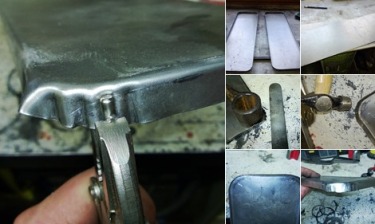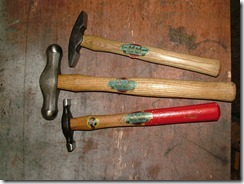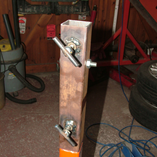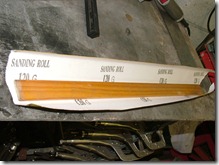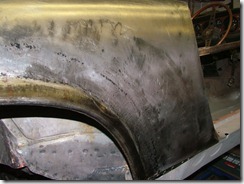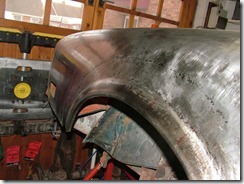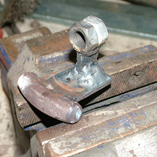The tanks ends were the next components to take shape. They are identical in construction, geometrically mirroring each other, although one was destined to have a hole for the filler neck added at a later stage.
My hammer forms, made from tough plywood are identical. I marked the most accurate half as the die but wasn’t sure if the plywood would withstand the rigours of making two pieces. With two identical forms I had the option of switching to the second one if the first lost it’s crisp edges. As it turns out I needn’t have worried as the die survived almost unscathed. Just as well because I had further plans for it….
I learned an awful lot from these pieces. I got nice crisp angles but couldn’t get anything like enough shrinkage on the corners hammering onto the plywood. I tried heat but with only a blowtorch, was not successful. I found a piece of Transit van leaf spring which was just the right radius for the corners and used a combination of tucks using my vise grip crimping tool and hammering onto the makeshift dolly to get it close. Then I switched to a technique that I’ve seen done by others, David Gardiner demonstrates it on his training DVD but I’d never been able to master it. Practice makes perfect though and eventually it clicked! The technique involves hammering obliquely on the edge of the turned flange to force the metal into itself. The angle of the blows, weight and effort all require precision and this is something you have to learn with practice. The first couple of corners I chased the spare metal back and forth but by the eighth corner I was a dab hand!
